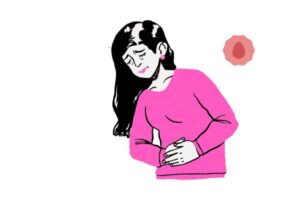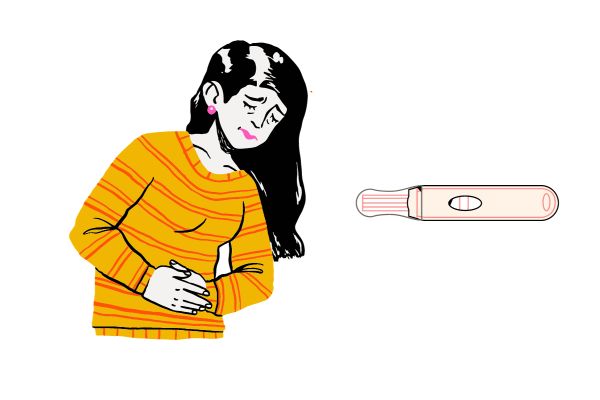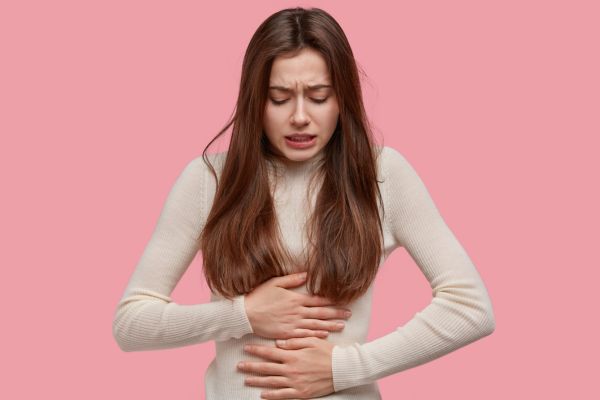Ever felt that mid-cycle twinge and wondered, “Am I ovulating? Does it even matter for getting pregnant?”
Join us as we unravel the mystery of ovulation pain! Explore whether this monthly nudge from your body offers clues about your fertility window and chances of conception. We’ll debunk myths, provide tips for managing discomfort, and empower you to understand your unique cycle rhythm. So, grab your curiosity, and let’s dive into the fascinating world of ovulation pain and pregnancy success!
What is ovulation pain?

Ovulation pain is a discomfort or pain felt in the lower abdomen, usually around the middle of the menstrual cycle. It occurs when an egg bursts from the ovary during ovulation, releasing an egg for potential fertilization.
Causes of pain
- Irritation: These fluids and chemicals can irritate the surrounding tissues, including the pelvic lining and fallopian tubes, causing pain.
- Stretching: Follicle growth can also stretch the ovary surface, contributing to discomfort.
- Blood flow: Increased blood flow to the ovaries during ovulation might also play a role.
What are Ovulation pain symptoms?
Ovulation pain symptoms can vary, but here are the most common ones:
Pain
- Location: Usually, there is one-sided pain in the lower abdomen, on the side where ovulation occurs.
- Intensity: Can range from a dull ache to a sharp pang.
- Duration: Typically lasts a few minutes to a few hours but can occasionally span up to 2 days.
Other potential symptoms
- Spotting: A small amount of light vaginal bleeding due to hormonal changes.
- Bloating: Abdominal distention and discomfort caused by hormonal fluctuations.
- Nausea: Mild nausea related to hormonal changes or increased pelvic activity.
- Breast tenderness: Increased sensitivity and discomfort in the breasts due to hormonal shifts.
- Increased cervical mucus: Clear, stretchy cervical mucus indicating peak fertility.
- Headache: Some women experience headaches around ovulation due to hormonal changes.
It’s important to note that Not everyone experiences all these symptoms. The severity of symptoms can vary from woman to woman and between cycles.
How long does ovulation pain last?
It can vary in duration from woman to woman and even from cycle to cycle. Here’s a breakdown of how long it might last:
Typical duration
- Usually, ovulation pain lasts a few minutes to a few hours.
- Some women may experience it for up to 24 hours.
- Rarely, it might persist for up to 48 hours, but anything exceeding this duration deserves a check-up with your healthcare provider.
Factors affecting duration
- Individual sensitivity: Some women are more sensitive to hormonal changes and tissue irritation during ovulation, leading to longer-lasting pain.
- Severity of follicle rupture: The extent of fluid and chemical release upon follicle rupture can influence the intensity and duration of pain.
- Underlying conditions: In some cases, conditions like endometriosis or pelvic inflammatory disease can exacerbate ovulation pain and make it last longer.
Tips for managing ovulation pain
- Gentle pain relief: Over-the-counter pain relievers like ibuprofen or acetaminophen can help manage the discomfort.
- Warm compress: Applying a warm compress to the lower abdomen can relax the muscles and ease pain.
- Rest and hydration: Allowing your body to rest and stay hydrated can improve overall comfort.
- Tracking your cycle: Charting your symptoms and ovulation pain alongside other cycle markers can help you identify patterns and predict future pain episodes.
Ovulation pain and pregnancy success

The relationship between ovulation pain and pregnancy success is a complex one, and there’s no definitive yes or no answer. While experiencing ovulation pain does indicate successful ovulation, which is a pre-requisite for pregnancy, it doesn’t directly affect your chances of conception. Here’s a deeper dive into the connection:
Ovulation pain as a sign of ovulation:
- Ovulation pain, caused by the rupture of the follicle and release of the egg, confirms that ovulation is happening in that cycle.
- This is helpful for women trying to conceive, as they can focus their efforts on the fertile window around ovulation (3-5 days before and the day of ovulation).
Pain doesn’t guarantee pregnancy:
- Unfortunately, experiencing ovulation pain doesn’t guarantee fertilization or successful implantation.
- Timing intercourse is crucial. The egg lives for about 24 hours after release, while sperm can survive for up to 5 days in the female reproductive tract. So, aiming for intercourse within this window maximizes the chances of conception.
Ovulation pain as a timing indicator:
- While ovulation pain might occur around the time of egg release, it’s not always a precise indicator. The pain can happen before, during, or even after ovulation.
- Relying solely on ovulation pain for timing intercourse can be unreliable. Combining it with other ovulation signs like cervical mucus changes, basal body temperature shifts, and ovulation predictor kits can offer a more comprehensive picture of your fertile window.
So, where does that leave us?
- Ovulation pain is a valuable indicator of a healthy ovulatory cycle but doesn’t directly impact your pregnancy chances.
- Combining it with other ovulation signs and tracking your cycle can significantly improve your understanding of your fertile window and optimize your chances of conception.
- Don’t be discouraged if you experience ovulation pain without immediate pregnancy success. Every woman’s journey is unique, and many factors beyond ovulation contribute to conception.
Additional tips for boosting pregnancy success:
- Maintain a healthy lifestyle with a balanced diet and regular exercise.
- Manage stress effectively, as it can disrupt ovulation and hormone balance.
- Seek support from your partner and healthcare professional if needed.
Remember: There’s no one-size-fits-all approach to conception. If you’re concerned about your fertility or have any questions, always consult your healthcare professional for personalized guidance. By understanding your body’s natural rhythms and tracking your cycle effectively, you can increase your awareness of your fertile window and take informed steps toward your pregnancy goals.
Conclusion
Ovulation pain, while sometimes uncomfortable, can be a valuable tool for understanding your menstrual cycle and optimizing your chances of conception. While it doesn’t guarantee pregnancy, it’s a sign of successful ovulation and indicates your fertile window.
Disclaimer
The information provided in this article is for informational purposes only and should not be substituted for professional medical advice. Always consult your healthcare provider for personalized guidance regarding your menstrual cycle, fertility, and any health concerns.





